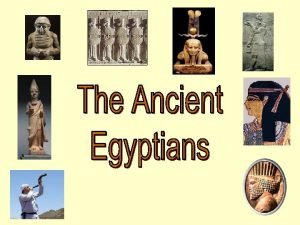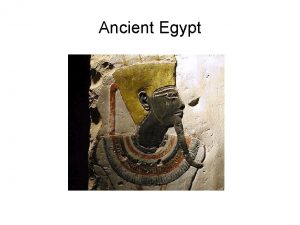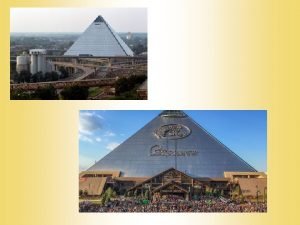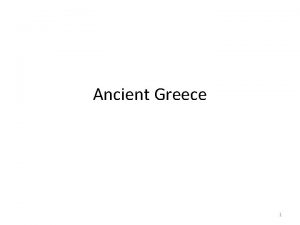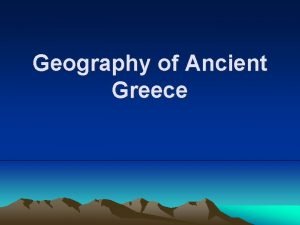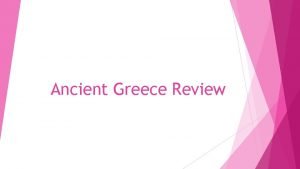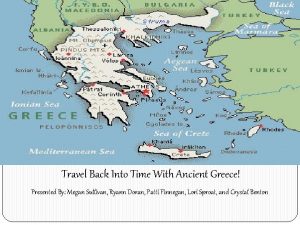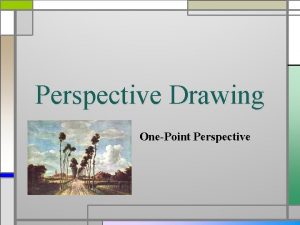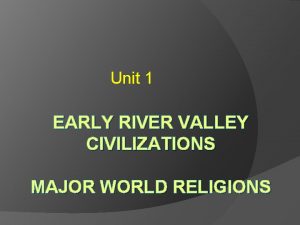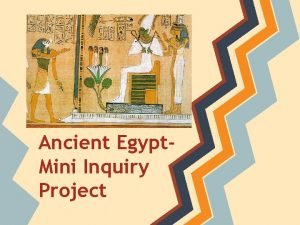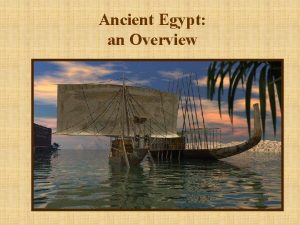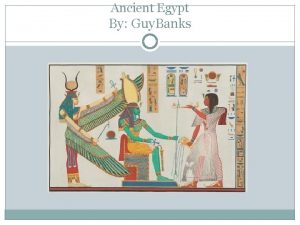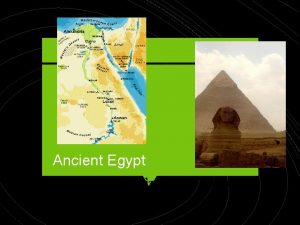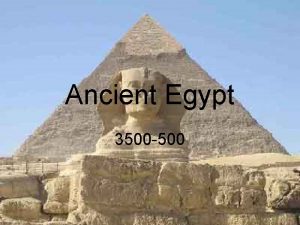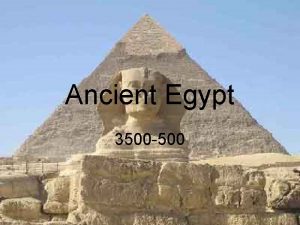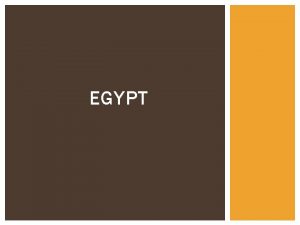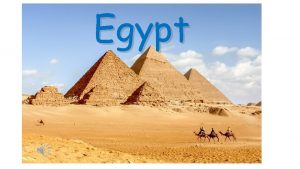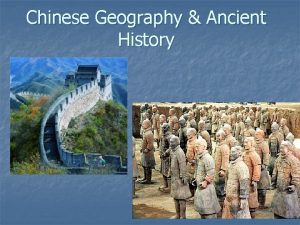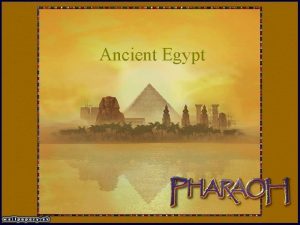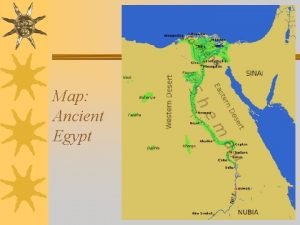Ancient Egypt Geography Egypt is located in the















- Slides: 15

Ancient Egypt

Geography • Egypt is located in the NE corner of Africa • It became an important civilization due to the Nile River • Egypt is known as the “gift of the Nile”

Geography • The Nile is a unique river – Begins in eastern central Africa & flows for 4, 100 miles northward • The Nile is the longest river in the world! • Every year in July the river flooded REGULARLY leaving behind rich soil.


Geographic Features Ancient Egypt – Nile River • Benefits: – Predictable yearly flooding allowed farming settlements to grow – Worshiped the river as a god b/c of its abundance – The Nile provided a reliable system of transportation between upper and lower Egypt.

Geographic Features Ancient Egypt – Deserts on Either Side of Nile River • Benefits: – Shut out invaders – Spared Egypt constant warfare

Pharaohs • Egyptian kings were called pharaohs • The Egyptians viewed their pharaohs as living gods • Pharaohs were religious leaders as well as leaders of the government and army • Thus, the Egyptian Government was a Theocracy (a government controlled by religious leaders. )

Religion • Polytheistic – divided into sun gods & land gods • 2, 000 gods and goddesses • Built huge temples to honor gods • Believed in afterlife

Life After Death • The ancient Egyptians believed in an afterlife of beauty, peace, and contentment. • Since most of their lives were filled with hard work, they looked forward to death as a release from this lifetime. • They believed their souls would need to use their bodies again, so the Egyptians invented a process to embalm their bodies called mummification. • Wealthy could afford better mummification than the poor

Steps in Mummification • After the body washed and covered with scented oils, the liver and kidneys were removed and placed in jars that would be put in the coffin later. • The brains were removed carefully, but the heart was left in the body because they believed it was the mind and would be needed immediately in the next life. • Then the body was wrapped in either linen or rough cotton strips and a sticky tar-like mixture was poured over the cloth strips forming a protective outer covering for the body. • When the mixture hardened, the mummy was placed in a wooden coffin, which was carved and painted to resemble a person. • Then the mummy was laid in its tomb, along with many objects the Egyptians thought it would need for daily use in the next lifetime, such as tools, jewelry, furniture, religious statues, and food. Egyptian Mummification Process (3: 33)

Pyramids • Egyptians believed that pharaohs ruled even after death. • The resting place for pharaohs after death was a pyramid. • Pyramids demonstrate the leadership, ingenuity and advanced technology needed to support such massive public works projects.


Life in Egyptian Society Pharaoh, Queen, royal family (Royal Advisor) Priests Wealthy landowners, Government Officials Traders/Merchants Ordinary Citizens Slaves

Advancements • Writing System - hieroglyphics (Greek for sacred carving) Used pictures to represent ideas • Developed papyrus, a paper-like substance made from reeds as a writing material. • Developed a calendar to keep track of the time between floods and when to plant.

• Developed written numbers for recording taxes – Addition & subtraction • Used geometry to survey land after the floods. • Most advanced medicine in the ancient world – could take pulse, set bones, had effective treatments for wounds and fevers and also performed surgery to treat some conditions.
 Ancient egypt civilization geography
Ancient egypt civilization geography Nubia
Nubia Upper egypt and lower egypt
Upper egypt and lower egypt Rome continent
Rome continent Ancient greece landforms
Ancient greece landforms Greece continent
Greece continent Rise and fall of greek civilization
Rise and fall of greek civilization Where was ancient greece located
Where was ancient greece located Chief god of egypt
Chief god of egypt artists use this perspective to show objects face-on.
artists use this perspective to show objects face-on. Ancient egypt civilization
Ancient egypt civilization Economy of ancient egypt
Economy of ancient egypt Specialized jobs in ancient egypt
Specialized jobs in ancient egypt Egyptian god of healing
Egyptian god of healing Transfer of energy pyramid
Transfer of energy pyramid Egypt kalasiris
Egypt kalasiris
